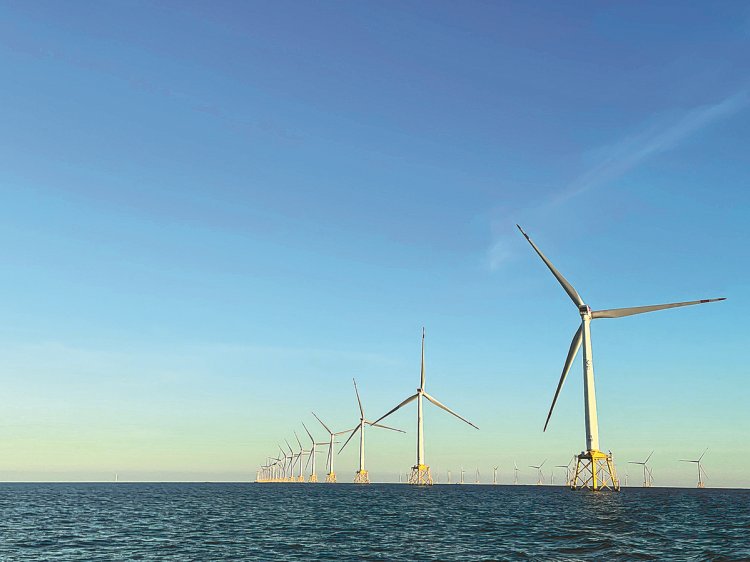
Renewable certificates powering green transition
Trading of green power supplies in China has been steadily growing in recent years and the trend is expected to further climb as the government expands the scope of its domestic renewable energy certificate scheme to include all types of renewable projects, said experts. State Power Investment Corp completed the country's first biomass power generation green certificate transaction last week after the government's announcement in August allowing all renewable energy projects eligible to generate green electricity certificates, in addition to just solar and onshore wind projects previously. The transaction will further facilitate the country's renewable energy development including biomass, geothermal, hydropower and others, it said. China launched its green electricity certificate system as a pilot program in 2017 to allow businesses and individuals to buy renewable energy voluntarily. Each certificate represents 1 megawatt-hour of renewable electricity consumption and can be traded on the open market. Income from selling green electricity certificates belongs to the power generation company or renewable project owners, and serves as an additional revenue stream alongside sales of renewable electricity. The National Development and Reform Commission said in August that all renewable energy projects are eligible to generate green electricity certificates and they can be sold to companies to certify that their electricity consumption is from renewable energy sources. This serves as an attempt to further encourage domestic renewable energy market development. Trade volume of green electricity certificates increased 15.8 fold in 2022 to 9.69 million, representing 9.69 terawatt-hours of renewable electricity consumption, said the NDRC, China's top economic regulator. The National Energy Administration said that since the beginning of this year, the issuance and trading volume of green electricity certificates in China both significantly increased, with 148 million green certificates issued by the end of October. Trade of green power in China has also been growing steadily, reaching 87.8 billion kilowatt-hours as of end-October. Caroline Zhu, senior analyst at S&P Global Commodity Insights, said extending issuance eligibility to other renewable energy projects allows better tracking and reporting of renewable power consumption while easing challenges for companies on carbon accounting and reporting, thus further incentivizing accelerated emissions reductions. Power purchase agreements have been acknowledged in the carbon border adjustment mechanism (CBAM) proposed by the European Union, though calculation methodology details remain unknown. Developing a credible tracking system could better prepare local manufacturers for the upcoming policy announcement and enforcement, Zhu said. Lin Boqiang, head of the China Institute for Studies in Energy Policy at Xiamen University, said the acceleration of green electricity trading in China in recent years has not only strengthened the profitability of renewable energy projects, but also further stimulated the vitality of the green electricity consumption market. Increasing eligible projects, like the biomass case, will result in a substantial increase in the supply of green electricity certificates, which is in line with government objectives to expand green electricity certificates to make them the primary renewable energy certificate program nationwide. With the deepening of the electricity market reform, it is expected to become the most significant means of consuming renewable energy, Lin said. Installed capacity of China's renewable power sector reached a record high in October at 1.4 billion kilowatts, up nearly 21 percent year-on-year and constituting nearly half of the country's total, amid the country's accelerated transition to a greener energy structure, the NEA said. The green electricity certificates will serve as a fundamental proof of the consumption of renewable energy in China, while State-owned enterprises, top industrial firms and trade-reliant companies should take the lead in increasing their green electricity consumption and green electricity certificate procurements, the NDRC said. On the other hand, however, despite the trading volume of green electricity in the domestic market in the first half reaching 21.3 billion kWh, the China Electricity Council said, it still only accounts for 1 percent of the total trading volume in provincial-level markets. TCM Healthcare lovehoney Bluetooth Earphones Bestbuy Earphones The certification and information disclosure mechanisms need improvement while more coordination details also need to be issued between the green certificate system and other systems, such as the national carbon market. The green certificate market has ample room to grow even bigger, Lin said.













